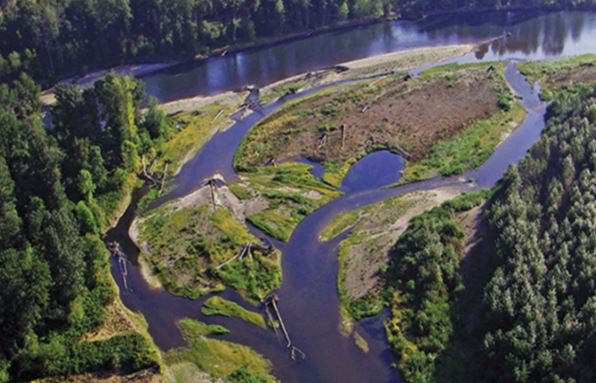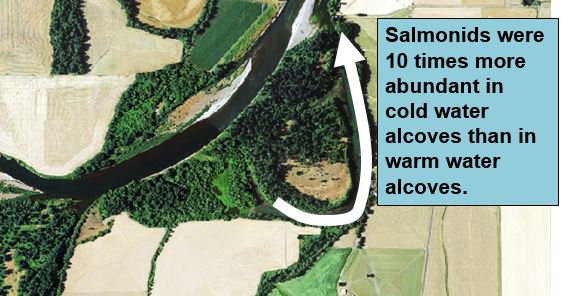Protecting Cold Water Refuges
Cold-water habitat will be increasingly important for fish as the climate warms. Finding those places now will help inform decisions about how to protect them in the future.
- April 18, 2017
- John Harrison

Scientific research increasingly is demonstrating the importance of cold-water habitat in a warming world for fish that need cold water to survive. In a presentation at the April Council meeting, Council staff discussed the work fisheries scientists and managers are doing to improve their understanding of where these cold-water refuges exist in the Columbia River Basin, how they are maintained by natural processes, how they are used by fish, and how they can be protected in the future.
There is no question that rivers are warming in the Northwest. Temperature data collected over the last 40 years has been compiled in the NorWeST database, maintained by the U.S. Forest Service. For the sites that had records of at least 10 years or longer, virtually all of these sites are showing a warming trend. Climate change models predict general increases in stream temperature as well as future shifts in the timing of streamflow. These changes could exacerbate the already challenging seasonal conditions for fish.
The sources and sizes of cold-water habitat vary across the landscape. Some cold-water refuges are kept cool by tributaries flowing into the main river. This is the case generally for the lower Columbia River from its confluence with the Snake River downstream to the ocean. Farther upstream in the Columbia system, groundwater feeds tributary rivers and streams, providing cooler water inputs. Maintaining and enhancing these refuges is critical to the conservation and long-term viability of salmon and steelhead in the Columbia River Basin. For example, in the mainstem Columbia, migrating steelhead will use cold water refuges for as long as several weeks. Chinook salmon, on the other hand, use refuges for shorter periods of time. A study of cold-water refuges in the Willamette River showed that salmonids were 10 times more abundant in cold-water alcoves than in water-water alcoves.

The alcove pictured above is along the Willamette River.
Numerous efforts are under way to understand the distribution, processes, and functions of cold-water habitats, and to identify measures to protect and restore them. However, there are still some data gaps. For example, additional information is being collected for tributaries along the mainstem Columbia River downstream of Bonneville Dam, to assess their potential to provide cold water refuges and to determine restoration actions. In other Columbia tributaries, site-specific data are needed to better understand the natural process that create cold-water habitats and how they can be maintained in the future. This information can help identify and prioritize restoration projects. Advances in tools such as remote sensing, aerial photography, and thermal infrared imaging are helping fill data gaps.
All of this is important to the Council, whose Columbia River Basin Fish and Wildlife Program supports continuing efforts to identify and protect cold water refuges in a warming climate.
“Where should our program focus?” Council Fish and Wildlife Committee Chair Jennifer Anders asked after the presentation. “We’re not going to change the climate, but there are things we can do. Should we focus high up in the system where there are cold water refuges now, or lower in the system where problems are more likely to develop?”
Washington Council member Guy Norman said the answer is clear to him: “In terms of policy, I have a tributary bias. It’s pragmatic. Fish spend a lot of time in tributaries. If they don’t survive in the tributaries, they won’t survive in the migratory channel.”



